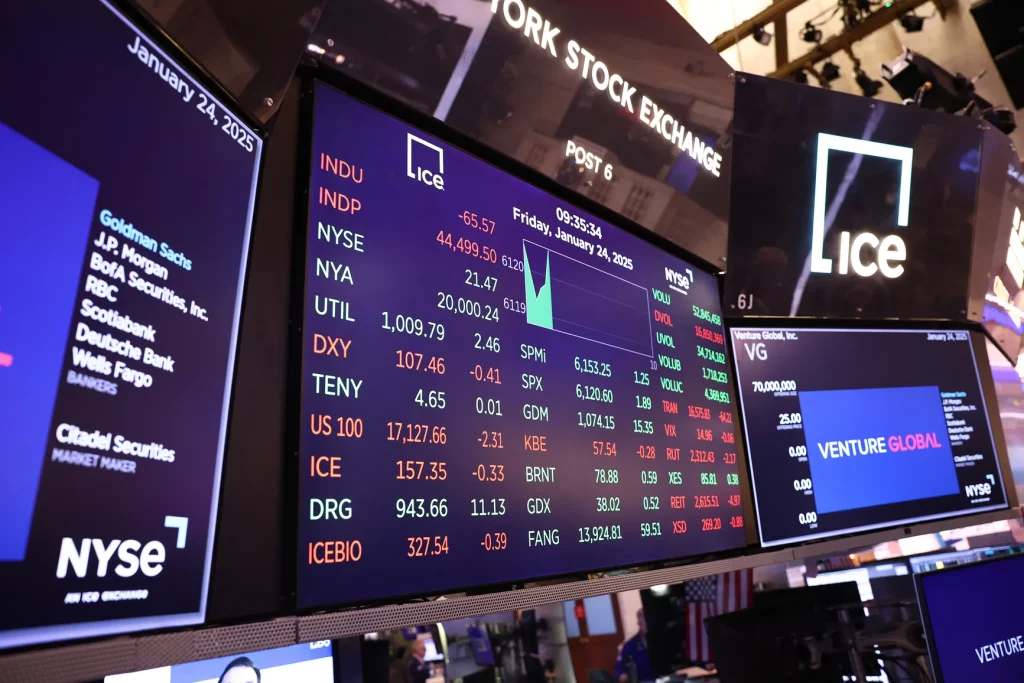Introduction
In the first quarter of 2025, US technology stocks surged impressively, with the NASDAQ Composite and other major tech indices posting gains of approximately 12%. This rally drew global attention, especially given technology’s role as a growth engine in the US economy. However, despite the bullish momentum stateside, Japanese equity markets painted a contrasting picture. Japan Exchange Traded Funds (ETFs) recorded a net outflow of $1.5 billion during the same period—a significant capital withdrawal that seemingly defied the positive global tech narrative. This divergence between the thriving US tech sector and retreating Japanese equity flows presents a perplexing puzzle: Why did the robust US tech stock rally decouple from Japanese equity investments in Q1 2025? Understanding this anomaly is crucial for investors navigating the increasingly interconnected yet regionally fragmented capital markets.
Key Data and Background
The 12% rise in US technology stocks during Q1 2025 represents one of the strongest quarterly performances since 2020. This upswing was driven by robust earnings reports from major players like Apple, Microsoft, and Nvidia, alongside accelerated adoption of AI-driven solutions across industries. Investors also responded positively to supportive Federal Reserve signals about a possible pause in interest rate hikes, improving liquidity conditions for high-growth sectors.
In contrast, Japanese ETFs experienced a net outflow of $1.5 billion, indicating investor withdrawal from domestic equities. This trend reflected cautious investor sentiment amid concerns over Japan’s economic stagnation, demographic challenges, and muted corporate earnings growth. According to the Japan Exchange Group, the TOPIX index remained largely flat in Q1 2025, failing to capture the enthusiasm witnessed in the US tech sector.
Two major forces shaped these contrasting flows. First, the US and Japan maintained markedly different monetary policy trajectories. While the US Federal Reserve hinted at a pause or slowing of rate hikes to support growth, the Bank of Japan (BOJ) adhered to its ultra-loose monetary policy with minimal changes, reflecting underlying inflation and economic growth struggles. Second, the shifting US industrial landscape, with its emphasis on reshoring and advanced manufacturing, exerted complex effects on Japan’s manufacturing supply chains, which are deeply integrated with US tech hardware production.
Cross-Market Impact
The divergence in equity flows and performance underscores significant cross-market implications, particularly in terms of capital movement and industrial interdependencies.
Capital flows between the US and Japan have traditionally mirrored synchronized market optimism or risk aversion. However, in Q1 2025, differing monetary policies distorted this pattern. The Fed’s prospective policy pause boosted risk appetite toward US tech stocks, attracting global capital seeking growth. Meanwhile, the BOJ’s continued low-rate environment failed to inspire similar enthusiasm, partly due to persistent deflationary pressures. This policy split heightened currency volatility between the US dollar and Japanese yen, causing capital to flow unevenly and complicating hedging strategies for Japanese investors.
Furthermore, Japan’s manufacturing sector felt ripple effects from US industrial adjustments. As US firms intensified reshoring efforts and invested heavily in domestic semiconductor and hardware supply chains, demand dynamics shifted away from traditional Japanese suppliers. This structural change exacerbated investor concerns over Japan’s export-driven growth model, contributing to equity outflows. For instance, major Japanese electronics firms reported slower order growth in Q1 2025, highlighting the tangible impact of US industrial policy on Japan’s economic fabric.
This situation parallels historical episodes such as the early 1990s when Japan’s asset bubble burst led to prolonged equity underperformance despite global economic growth elsewhere. However, unlike past cycles, the current divergence is amplified by modern policy divergences and sector-specific industrial shifts, making it more complex and nuanced.

Expert Viewpoints
Morgan Stanley analysts emphasize that the primary driver behind this decoupling is the asynchronous valuation cycles of US and Japanese markets. They argue that the US tech sector’s growth is fueled by innovation and a more dynamic venture ecosystem, while Japan faces structural headwinds including aging demographics and slower productivity growth. Morgan Stanley’s Q1 2025 Global Market Outlook report highlights that while US equities entered a growth-focused phase, Japanese stocks remain trapped in a value-oriented, risk-averse cycle.
In contrast, independent strategists focusing on Asia-Pacific markets suggest the outflows from Japanese equities reflect deeper structural issues. They point to Japan’s persistent population decline and sluggish domestic consumption as factors undermining investor confidence. Additionally, these strategists argue that the withdrawal is not simply a reflection of global rotation toward US tech but a cautionary response to Japan’s challenges in adapting to new industrial paradigms.
Adding nuance, some market commentators highlight the role of currency movements and geopolitical risks, noting that ongoing tensions in the Indo-Pacific region may weigh disproportionately on Japan’s market sentiment compared to the relatively insulated US tech sector.
These contrasting viewpoints align with findings from institutional research by Goldman Sachs and UBS, both emphasizing the complexity of disentangling global capital flows amid region-specific economic and policy forces.
Future Outlook and Strategy
Looking ahead to the remainder of 2025, three scenarios could unfold. The optimistic scenario assumes Japan undertakes meaningful structural reforms, revitalizing its growth prospects and aligning more closely with global innovation cycles. In this case, capital outflows may reverse, supporting a recovery in Japanese equity flows. The moderate scenario sees continued policy divergence but with some coordination, stabilizing flows though maintaining some decoupling. The pessimistic scenario envisions prolonged Japanese economic stagnation coupled with tightening US monetary policy, exacerbating outflows and broadening the performance gap.
Investors should adopt a nuanced strategy that recognizes these diverging forces. This includes closely monitoring central bank policy signals, corporate earnings across regions, and supply chain developments. Diversification strategies that balance exposure to US growth sectors with selective Japanese equities poised for reform-driven gains can help mitigate risks. Additionally, currency risk management remains crucial amid persistent USD/JPY volatility.
Conclusion
The 2025 Q1 decoupling of the US tech stock rally from Japanese equity flows highlights how monetary policy divergence, industrial shifts, and structural economic differences shape global capital allocation. While the US tech sector capitalized on innovation and supportive policy, Japan faced capital outflows driven by longstanding economic challenges and supply chain disruptions. This divergence underscores the importance of understanding regional nuances within an increasingly interconnected financial landscape. How will Japan’s policy responses and structural reforms evolve to re-engage global investors and close this equity flow gap?






























